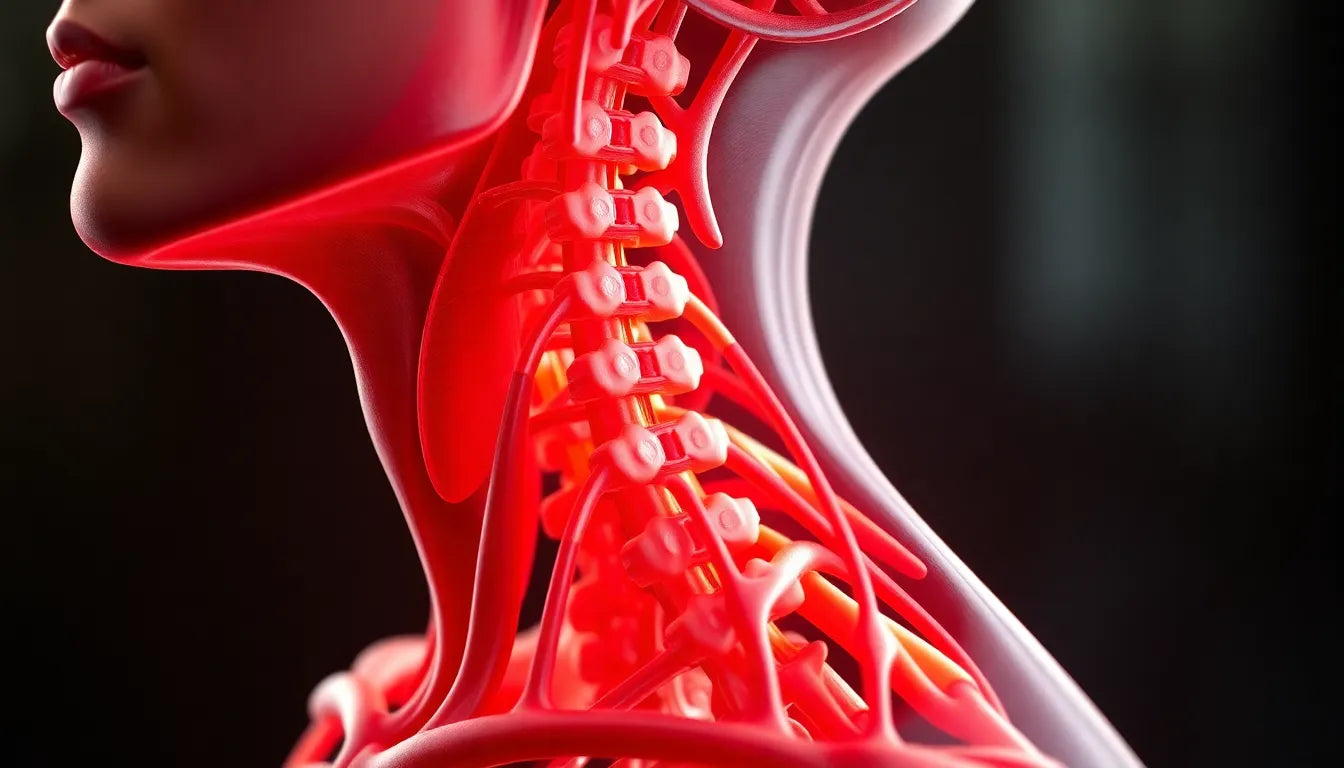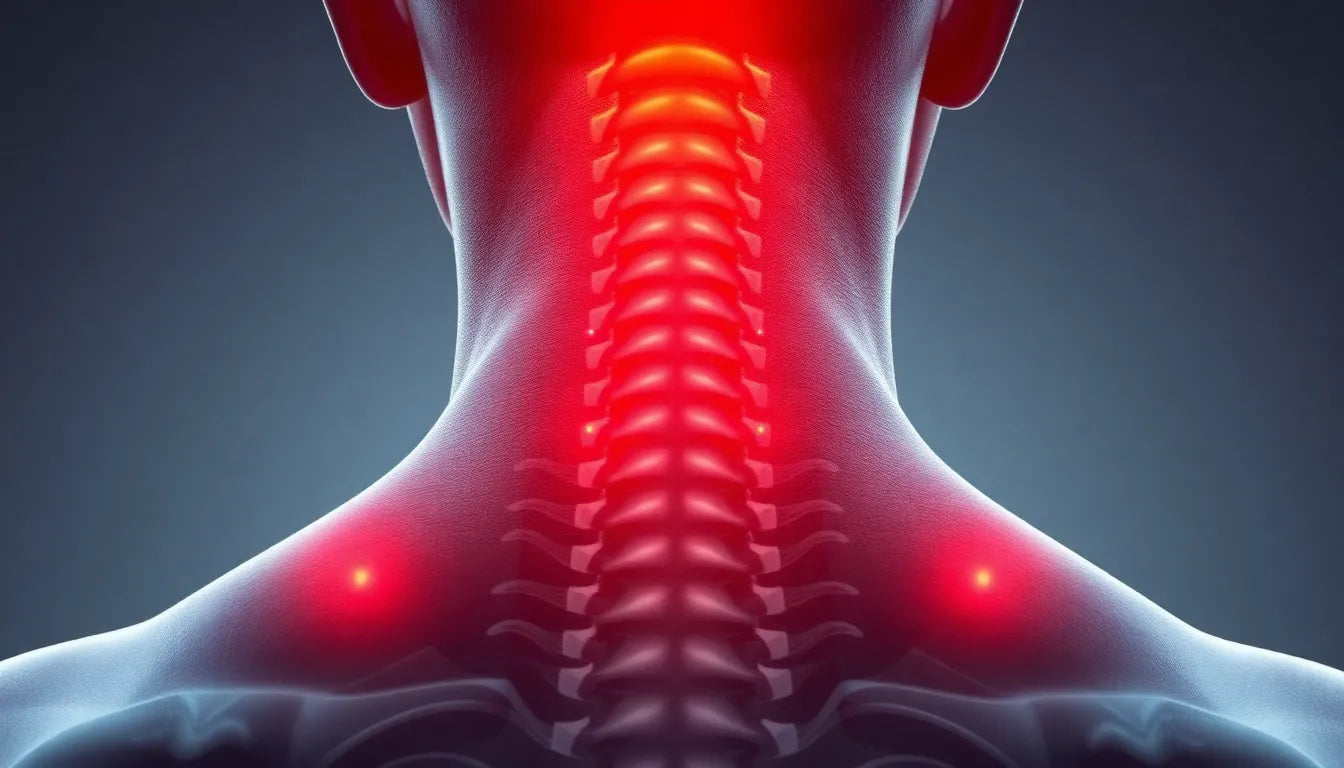Picture this: You've been sitting at your desk for hours, immersed in work, when suddenly you feel a tightness creeping up your neck. Or perhaps you've spent the evening scrolling through your smartphone, only to realize that your neck feels stiff and sore. These are common scenarios where neck strain might strike, an issue that many of us have experienced at some point in our lives. Whether it's due to prolonged hours at a desk, excessive smartphone use, or a minor accident, neck strain is a prevalent problem that can affect anyone, regardless of age or occupation.
Understanding why neck strain occurs is crucial for effective prevention and management. It's not just a minor inconvenience; when left unaddressed, neck strain can lead to chronic pain, significantly impacting your overall quality of life. By delving into the root causes of neck strain, you can take proactive steps to alleviate and prevent this discomfort.
why neck strain is more than a minor inconvenience
While neck strain might seem like a temporary discomfort, its implications can be far-reaching. Chronic neck pain can interfere with daily activities, reduce productivity, and even affect your mental well-being. The persistent pain and stiffness can make it difficult to concentrate, sleep, or enjoy leisure activities, leading to a cycle of discomfort and stress. Recognizing the seriousness of neck strain is the first step towards addressing it effectively.
Several factors contribute to neck strain, and understanding these can help you mitigate the risks. Poor posture is one of the leading causes, often exacerbated by modern lifestyle habits such as prolonged sitting and excessive smartphone use. This can lead to what's commonly known as "text neck," where the forward head position strains the neck muscles. Additionally, acute and repetitive injuries, such as whiplash from accidents or repetitive motions, can also cause significant strain.
Moreover, degenerative changes like cervical spondylosis and arthritis, especially prevalent in older adults, can contribute to chronic neck pain and strain. These conditions can alter the structure of the neck over time, leading to increased vulnerability to strain. Understanding these underlying causes sets the stage for a deeper exploration into how you can prevent and manage neck strain effectively.
core causes of neck strain
Neck strain, often underestimated, can arise from several core causes. At the forefront is poor posture, a byproduct of our modern lifestyle. The habitual forward head position, commonly seen during prolonged desk work or smartphone use, exerts undue pressure on the neck muscles. This condition, popularly termed "text neck," reflects the biomechanical stress that poor posture places on the cervical spine. When the head is tilted forward, the weight on the neck increases significantly, leading to muscle overuse and strain.

Women's Posture Shirt™ - Black
Patented technology shirt helps improve posture and reduce neck, shoulder, and back pain.
Another common cause is acute and repetitive injury. Sudden movements, such as those experienced during sports activities or minor accidents like whiplash, can result in acute neck strain. Whiplash, often associated with car accidents, involves a rapid back-and-forth motion of the neck, causing muscle and ligament damage. Additionally, repetitive motions, even if they are of low intensity, can gradually stress neck muscles over time, leading to chronic discomfort and pain.
Degenerative changes also play a significant role in neck strain, particularly among older adults. Conditions such as cervical spondylosis and arthritis contribute to the wear and tear of the cervical spine. These age-related changes can lead to stiffness, pain, and an increased risk of neck strain. Statistics indicate that cervical spondylosis affects more than 85% of people over the age of 60, underscoring its prevalence and impact on neck health.
underlying health conditions contributing to neck strain
Beyond the mechanical causes, certain underlying health conditions can exacerbate neck strain. Herniated discs, spinal stenosis, and fibromyalgia are some of the medical conditions that can lead to or worsen neck pain. A herniated disc occurs when the soft inner gel of a spinal disc leaks out, irritating nearby nerves and causing pain. Spinal stenosis, the narrowing of the spaces within the spine, can also compress nerves and lead to discomfort.
Fibromyalgia, a condition characterized by widespread musculoskeletal pain, often includes neck pain as a symptom. This condition is believed to amplify painful sensations by affecting the way the brain processes pain signals. Furthermore, psychosocial factors such as stress and anxiety can increase muscle tension, leading to neck strain. Stress often manifests physically, causing muscles to tighten and leading to persistent pain.
Understanding these underlying health conditions is crucial for effective management and treatment of neck strain. It highlights the importance of a comprehensive approach that considers both physical and psychological factors in addressing neck pain.
holistic strategies for managing neck strain
Addressing neck strain requires a multifaceted approach that incorporates lifestyle changes, ergonomic adjustments, and when necessary, medical intervention. Practicing good posture is essential in mitigating neck strain. Ensuring that your workstation is ergonomically sound can significantly reduce the risk of developing neck pain. This includes adjusting your chair and monitor height to keep your head aligned with your spine.

Men's Posture Shirt™ - Black
Patented NeuroBand™ shirt supports better posture and may relieve neck and back pain.
Regular breaks during prolonged activities, such as desk work or smartphone use, can also help alleviate muscle tension. Incorporating stretches and exercises that strengthen the neck and shoulder muscles can improve flexibility and reduce strain. For those experiencing chronic or severe neck pain, consulting a healthcare professional is advisable. They can provide tailored advice and treatment options, including physical therapy or medication if necessary.
By understanding the causes and implementing preventive measures, you can effectively manage neck strain and improve your overall quality of life. Taking proactive steps not only alleviates current discomfort but also prevents future occurrences, ensuring that neck strain does not become a chronic issue.
modern lifestyle and technology's impact on neck strain
In today's digital age, technology plays a significant role in the prevalence of neck strain. The term "text neck" has become commonplace, describing the forward head posture many adopt while using smartphones and tablets. This posture increases the load on the cervical spine, leading to muscle fatigue and strain. Similarly, remote work setups often lack ergonomic consideration, contributing to poor posture and subsequent neck pain.
To counteract these modern challenges, it's crucial to make ergonomic adjustments in your daily routine. Ensure that your computer monitor is at eye level to prevent tilting your head forward. Use a chair that supports your lower back and allows your feet to rest flat on the floor. For smartphone use, try holding the device at eye level to reduce the strain on your neck.
practical advice for prevention and management
Preventing neck strain involves adopting healthy habits and making mindful adjustments to your environment. Below is a list of do’s and don’ts to help maintain neck health:
- Do: Practice good posture by keeping your ears aligned with your shoulders and your back straight.
- Do: Take regular breaks during prolonged activities to stretch and relax your neck muscles.
- Do: Use ergonomic furniture that supports proper posture and reduces strain.
- Don't: Ignore persistent pain, as it may indicate a more serious condition.
- Don't: Use improper lifting techniques that can exacerbate neck strain.
- Don't: Hold phones between your shoulder and ear, which can lead to muscle tension.
red flags and when to seek medical attention
While many cases of neck strain can be managed with lifestyle adjustments and self-care, certain symptoms warrant professional evaluation. Seek medical attention if you experience numbness, severe pain, or weakness in your neck or arms. These could be signs of a more serious condition that requires medical intervention.
frequently asked questions
What are the best exercises to prevent neck strain?
Incorporating neck stretches and strengthening exercises into your routine can help prevent neck strain. Gentle neck stretches, such as tilting your head side to side and rotating your neck, can improve flexibility. Strengthening exercises like chin tucks and shoulder blade squeezes can build muscle support for your neck.
How can I improve my workstation to prevent neck strain?
To create an ergonomic workstation, adjust your monitor so that it is at eye level and about an arm's length away. Use a chair that supports your lower back and allows your feet to rest flat on the floor. Position your keyboard and mouse at a height that keeps your elbows close to your body and your wrists straight.
Is neck strain a sign of a more serious condition?
While neck strain is often due to posture or minor injuries, it can sometimes indicate a more serious underlying issue, such as a herniated disc or spinal stenosis. If neck pain persists, is severe, or is accompanied by symptoms like numbness or weakness, it's important to consult a healthcare professional for a thorough evaluation.
Källor
- UCHealth. "Neck Strain."
- GoodRx. "Tech Neck Exercises."
- University of Maryland Medical Center. "Neck Pain Overview."
- THC Bone and Joint. "Neck Exercises."
- National Center for Biotechnology Information. "Article on Neck Pain."
- MyHealth.Alberta.ca. "Neck Strain or Sprain Rehab Exercises."
- National Center for Biotechnology Information. "Book on Neck Injuries."
- Spine-Health. "Daily Exercises and Stretches to Prevent Neck Pain."
- Mayo Clinic. "Neck Pain: Symptoms and Causes."
- Advanced Sports & Spine. "Exercises for Neck Strain."
- American Family Physician. "Article on Neck Pain."
- MedlinePlus. "Neck Injuries and Disorders."
- Impact Physical Therapy. "6 Exercises to Reduce Stress and Strain in the Neck."
- Kaiser Permanente. "Neck Strain or Sprain Rehab Exercises."


















